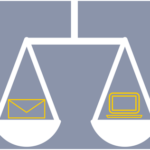![By Nick Ausloos (Own work) [GFDL (http://www.gnu.org/copyleft/fdl.html) or CC BY-SA 3.0 (http://creativecommons.org/licenses/by-sa/3.0)], via Wikimedia Commons](https://www.diditdm.com/wp-content/uploads/2015/07/digital-diagram.png)
July 14, 2015: There’s no question that the digital revolution is disrupting the traditional methods used by brand marketers to reach their audiences. To respond to these changes, many brands have adopted a “digital first” strategy, especially when marketing to the always on Millennial Generation. But while “digital first” is an appropriate stance to take when confronting the difficult challenges of marketing to today’s digital-centric, super-empowered consumers, too many brand marketers seem to believe that “digital first” means “digital only.” That’s a strategic mistake for quite a few reasons, including the following:
1. Digital marketing is overrun with spam. Ad-blocking software is on the rise, with 144 million people proactively deciding that they’ve had it with advertising — at least the way it’s conducted today on the Web. In September, Apple’s new iOS9 will allow developers to create ad-blocking extensions to its popular Safari browser. While search ads remain a good way to capture interest when buying intent is high, the competitive auction environments make buying clicks prohibitively expensive for many marketers. The pitfalls facing digital only marketers grow each day, as advertisers and consumers play a cat and mouse game that the mice keep winning.
2. Content Marketing is saturated. More than a year ago, SEO guru Rand Fishkin warned that the supply of content produced each day by Content Marketing teams would soon outstrip the ability of human readers to consume it. While Content Marketing is still an effective way to engage with audiences, creating great content is expensive, and there’s far less likelihood of it being read (and acted upon) than was the case even five years ago. In the same way that spam infested once pristine digital channels in a modern-day instance of the Tragedy of the Commons, good content marketers are being crowded out by mediocre and bad ones, which makes the digital first approach even weaker.
3. People still crave human contact. An ironic and completely unplanned consequence of the digital revolution is that people seem to get more pleasure from non-digital occurrences than digital ones. There are thousands of people in the U.S. — who have never actually received a hand-written letter or postcard. Many have never even seen a phone book. While it’s too early to say that there’s a backlash against digital marketing in the works, this phenomenon may explain some recent findings of the Direct Marketing Association (DMA), which found that 42 percent of direct mail recipients read or scan the direct mail pieces they receive, which is much better than the 1 to 3 percent open rate for email. It also might explain why hybrid online-offline events (such as Meetups and Tweet chats) are wildly popular.
4. Less is more. The “digital first” crowd has had an outsized influence on marketing culture, and their Go Digital or Die keynote speeches have succeeded in scaring many marketers away from older methods, even if those methods work very well. Take direct mail, for example. Currently, the average number of direct mail pieces received by the American household is just 19 per week (down from 24.7 in 2008), a trend the USPS calls digital diversion. While some of this retrenchment may be rational, my bet is that a lot of it isn’t — it’s just a case of chasing the next shiny marketing object, a chase that digital firsters have been leading for a long time.
Look, don’t get me wrong. Digital Marketing — when done right — can be incredibly compelling. But like any useful marketing tactic, it’s a mistake to put all your marketing eggs in any one basket. Most successful marketers rarely use one tactic — or related set of tactics — to get the job done. Instead, they experiment and combine channels and tactics in order to reach unique ROI “sweet spots,” which are naturally different for every business. Think of your consumers holistically — as real people — who have interesting, multifaceted lives that provide for a wide range of encounters with your brand online and off.
Don’t limit yourself to one tactic or channel, unless you’re OK with your message being lost in the noise, whether it be analog or digital.










![By Photograph: Frank C. Müller, Baden-Baden (Own work) [CC BY-SA 2.5 (http://creativecommons.org/licenses/by-sa/2.5)], via Wikimedia Commons](https://www.diditdm.com/wp-content/uploads/2015/08/opening-an-envelope-150x150.jpg)
![By User:Introvert (Own work) [CC BY-SA 2.5 (http://creativecommons.org/licenses/by-sa/2.5)], via Wikimedia Commons](https://www.diditdm.com/wp-content/uploads/2015/10/1024px-Sparkling-snow.sierra-150x150.jpg)